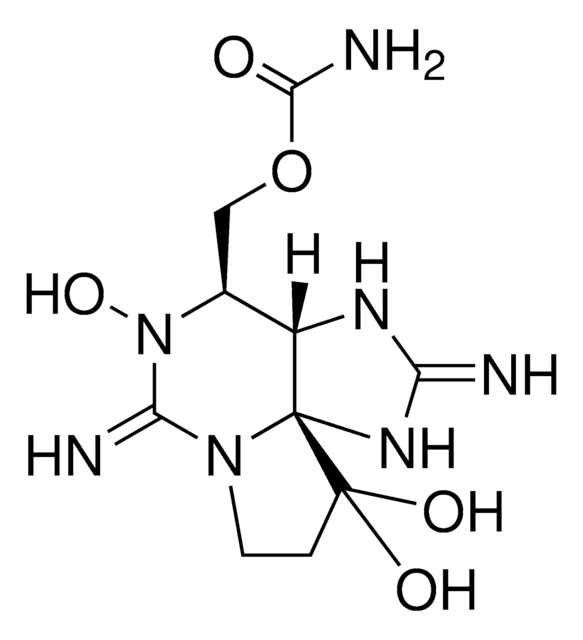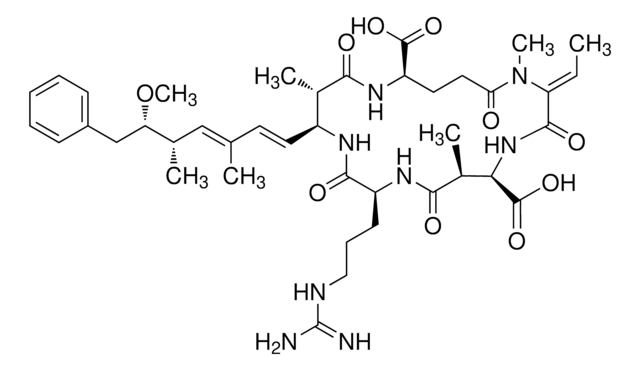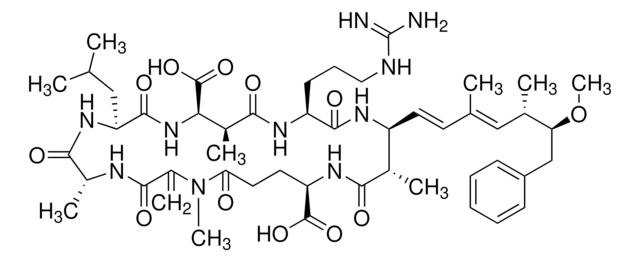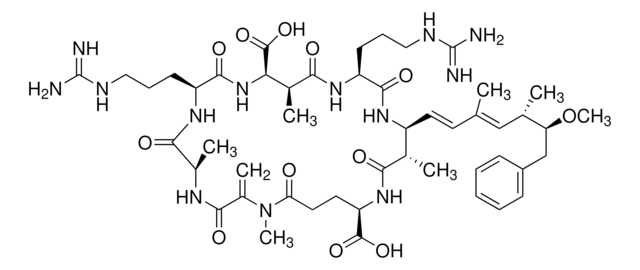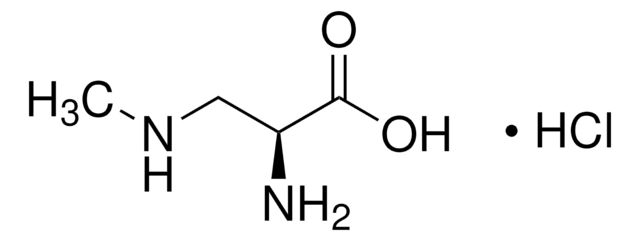32087
Cylindrospermopsin solution
10 μg/mL in H2O, PESTANAL®, analytical standard
Sinonimo/i:
6-[(R)-Hydroxy[(2aS,3R,4S,5aS,7R)-2,2a,3,4,5,5a,6,7-octahydro-3-methyl-4-(sulfooxy)-1H-1,8,8b-triazaacenaphthylen-7-yl]methyl]-2,4(1H,3H)-pyrimidinedione
About This Item
Prodotti consigliati
Grado
analytical standard
Livello qualitativo
Nome Commerciale
PESTANAL®
Durata
limited shelf life, expiry date on the label
Concentrazione
10 μg/mL in H2O
tecniche
HPLC: suitable
gas chromatography (GC): suitable
applicazioni
cleaning products
cosmetics
food and beverages
personal care
Formato
single component solution
Temperatura di conservazione
−20°C
Stringa SMILE
C[C@H]1[C@H](C[C@@H]2C[C@@H](N=C3NC[C@H]1N23)[C@@H](O)C4=CC(=O)NC(=O)N4)OS(O)(=O)=O
InChI
1S/C15H21N5O7S/c1-6-10-5-16-14-17-8(13(22)9-4-12(21)19-15(23)18-9)2-7(20(10)14)3-11(6)27-28(24,25)26/h4,6-8,10-11,13,22H,2-3,5H2,1H3,(H,16,17)(H,24,25,26)(H2,18,19,21,23)/t6-,7+,8-,10-,11+,13+/m1/s1
LHJPHMKIGRLKDR-YUQKHPEDSA-N
Cerchi prodotti simili? Visita Guida al confronto tra prodotti
Applicazioni
Note legali
Non trovi il prodotto giusto?
Prova il nostro Motore di ricerca dei prodotti.
Codice della classe di stoccaggio
10 - Combustible liquids
Punto d’infiammabilità (°F)
Not applicable
Punto d’infiammabilità (°C)
Not applicable
Scegli una delle versioni più recenti:
Possiedi già questo prodotto?
I documenti relativi ai prodotti acquistati recentemente sono disponibili nell’Archivio dei documenti.
I clienti hanno visto anche
Il team dei nostri ricercatori vanta grande esperienza in tutte le aree della ricerca quali Life Science, scienza dei materiali, sintesi chimica, cromatografia, discipline analitiche, ecc..
Contatta l'Assistenza Tecnica.
